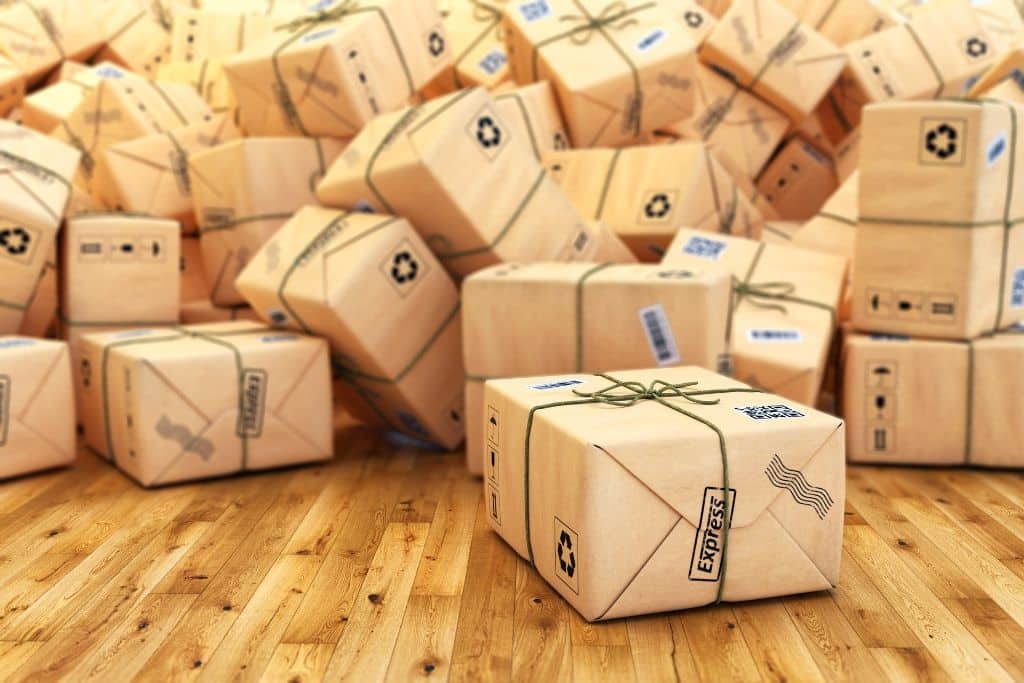
The technology sector leads the charge in innovation, but its love affair with new gadgets often results in a byproduct of harmful packaging waste. Balancing the need for protection with our planet’s help is an eternal challenge.
The following list of sustainable packaging solutions offers a roadmap for the tech industry to reduce its impact on the environment while ensuring the safe delivery of ‘dangerous goods.’
1. Embrace Biodegradable Packaging Materials
Biodegradable materials from sustainable and renewable resources present a compelling and eco-friendly alternative to conventional packaging plastics. These innovative solutions are designed to decompose over time, leaving no harmful residues behind naturally.
Choosing biodegradable options can ensure the disposal process is efficient and environmentally responsible, reducing the burden on our planet and paving the way for a greener future.
2. Recyclable Packaging Solutions
Materials like cardboard, paper, and some plastics, such as PET and HDPE, are readily recyclable. By prioritising the use of these recyclable options, tech firms can make a significant positive impact on the environment.
Phasing out non-recyclable packaging and embracing sustainable alternatives reduces virgin material consumption and minimises waste at the end of the product lifecycle. This approach aligns with the principles of a circular economy, where resources are kept in use for as long as possible, creating a more sustainable and greener future.
3. Integrate Compostable Packaging Alternatives
Compostable packaging is designed to break down into natural elements, such as water, carbon dioxide, and organic matter, through natural processes like decay and decomposition. It leaves behind no visible, distinguishable, or toxic residue, making it an environmentally friendly choice.
This type of packaging is particularly beneficial for specific types of tech goods, such as electronic devices, as it helps to reduce the environmental impact of their disposal. When disposed of correctly, compostable packaging can contribute to circular economy practices by enriching the soil and promoting sustainable waste management.
4. Implement Reusable Packaging Systems
Reusable dg packaging solutions can help reduce waste in the tech sector by offering a more sustainable alternative to single-use packaging. Implementing a closed-loop system that collects and returns packaging for reuse can significantly reduce the environmental impact of tech goods.
While this approach may require some initial investment, it has long-term benefits for both the environment and businesses.
5. Choose Eco-Friendly Cushioning Materials
Peanuts, bubble wrap, and air pillows are packing essentials for delicate tech equipment but are also environmental hazards. Switching to biodegradable or recycled options like mushroom foam can maintain safety while reducing waste.
Additionally, choosing cushioning materials that are made from renewable resources, such as bamboo or hemp, further decreases the environmental impact.
6. Opt for a Minimalist Packaging Design
Excess packaging is not only an environmental concern but often unnecessary. Streamlining packaging design to eliminate superfluous elements can significantly reduce the amount of material used while saving on space, weight, and shipping costs.
This approach also allows for more efficient use of resources, reducing the carbon footprint and waste associated with packaging production.
7. Adhere to Sustainable Shipping Practices
From optimising package size to consolidating shipments, changes in shipping practices can have a considerable impact. Incorporating renewable energy sources for transport is another crucial element in the journey towards a sustainable tech industry.
Shipping goods using greener methods, such as electric or hybrid vehicles help businesses significantly reduce their carbon footprint and contribute to a more sustainable future.
8. Enact Eco-Conscious Branding and Labelling
Branding materials and labels often go unnoticed in the sustainable packaging conversation. Yet, they are integral to a holistic approach. The selection of recycled and biodegradable options for this part of the packing can enhance the overall eco-friendliness of the product.
Additionally, printing labels with eco-friendly ink and avoiding unnecessary packaging inserts can reduce environmental impact.
9. Foster Collaborative Packaging Initiatives
The tech industry can play a leading role in driving the adoption of sustainable dg packaging solutions by collaborating with other companies and industries. Together, businesses can share best practices and resources to create positive environmental impacts on a more significant scale.
Partnering with NGOs and participating in industry-wide initiatives can also promote the adoption of sustainable packaging practices.
10. Embrace Innovations in Packaging Technology
Technological advances like dissolvable packaging, smart packaging with tracking capabilities to prevent loss, and nanotechnology-based packaging offer exciting glimpses into the future of sustainable packaging.
Investing in emerging technologies can grant tech companies a competitive edge while reducing their environmental impact. As the demand for sustainable packaging solutions continues to grow, the tech industry must embrace and invest in these innovations.
Conclusion
Sustainable packaging doesn’t just make good environmental sense. It aligns with consumer expectations and regulatory drivers.
As consumers and governments increase pressure on businesses to take responsibility, adopting these solutions isn’t just a choice; it’s a necessity for survival and growth. By implementing these sustainable packaging practices, the tech industry can lead the way towards a greener future.
